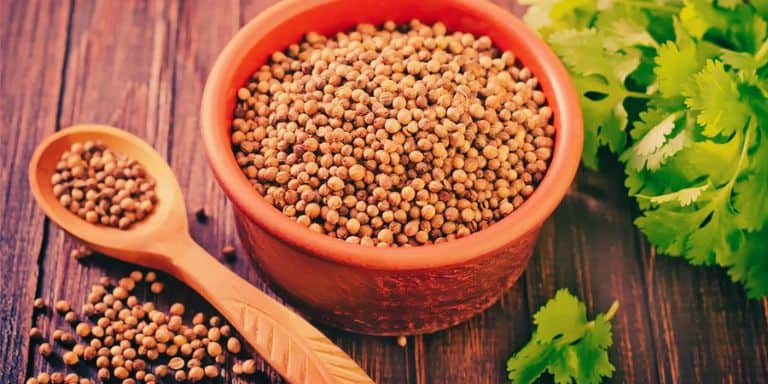Koriandri Explained Incredible Health Benefits and Tasty Culinary Uses
Koriandri is a widely used herb and spice that comes from the plant Coriandrum sativum. Known in English as coriander, this versatile ingredient is valued for both its culinary flavor and medicinal benefits. In different cultures, koriandri leaves (often called cilantro) and seeds are used to enhance food, support digestion, and even promote wellness. In this guide, we’ll explore the history, nutritional profile, health benefits, and ways to use korian dri in daily cooking.
What is Koriandri?
The term koriandri usually refers to the seeds or leaves of the coriander plant. Belonging to the Apiaceae family, this plant is cultivated worldwide, especially in Asia, the Middle East, and the Mediterranean region.
- Leaves: Known as cilantro, fresh and aromatic.
- Seeds: Known as coriander seeds, warm and citrusy in flavor.
- Powder: Made by grinding the dried seeds, widely used in spice blends.
Historical Background
Koriandri has been cultivated for thousands of years. Ancient civilizations, including the Egyptians and Greeks, valued coriander seeds for medicinal and culinary purposes. Historical records even show that coriander seeds were found in the tomb of Tutankhamun, proving its ancient importance.
In South Asian and Middle Eastern cuisines, korian dri remains a staple spice, often combined with cumin, turmeric, and chili powder to build complex flavors.
Nutritional Profile of Koriandri
Koriandri seeds and leaves are packed with essential nutrients, including:
- Vitamins: Vitamin C, Vitamin A, and Vitamin K (in leaves).
- Minerals: Iron, calcium, potassium, and magnesium.
- Plant compounds: Antioxidants, flavonoids, and essential oils.
These nutrients contribute to the herb’s wide range of health benefits.
Health Benefits of Koriandri
1. Supports Digestion
Koriandri seeds are known for their ability to stimulate digestive enzymes, reduce bloating, and ease discomfort. Herbal teas made from coriander seeds are often used for soothing the stomach.
2. Rich in Antioxidants
The antioxidants present in korian dri help fight free radicals in the body, reducing the risk of inflammation and chronic disease.
3. Helps Manage Blood Sugar
Some studies suggest that korian dri seeds may support better blood sugar regulation, making it potentially beneficial for people managing diabetes.
4. Heart Health
Korian dri contains compounds that may help lower cholesterol and improve overall cardiovascular wellness.
5. Detoxification
Coriander leaves are sometimes used in detox diets, as they may assist in removing heavy metals from the body.
Culinary Uses of Koriandri
In Indian Cuisine
- Coriander powder is a core ingredient in curries, lentil dishes, and spice blends like garam masala.
- Fresh leaves are sprinkled on top of biryani, chutneys, and vegetable dishes for aroma and freshness.
In Middle Eastern Cuisine
- Used in spice rubs for meats, stews, and sauces.
- Paired with cumin and paprika to create signature flavors.
In Latin American Cuisine
- Cilantro leaves are central to salsas, guacamole, and marinades.
- They provide a fresh, citrusy contrast to spicy dishes.
In Beverages
Coriander seed tea and infused water are popular for refreshing hydration and digestive support.
How to Store Koriandri
- Seeds: Store in an airtight container in a cool, dry place.
- Powder: Keep in a sealed jar; use within 6 months for best flavor.
- Leaves: Refrigerate wrapped in paper towels, or freeze for longer use.
Growing Koriandri at Home
Koriandri is easy to grow in pots or gardens. It requires:
- Well-drained soil
- Plenty of sunlight
- Regular watering
- Harvesting of leaves before the plant flowers (bolts)
Homegrown korian dri provides fresher taste and higher nutrient content compared to store-bought.
Final Thoughts
Koriandri is much more than a cooking ingredient—it is a spice with deep historical roots, strong nutritional value, and versatile culinary applications. Whether you enjoy its fresh leaves in salads and chutneys or its warm seeds in curries and breads, koria ndri remains one of the most valuable herbs in global cuisine.
By incorporating korian dri into your meals, you gain both flavor and health benefits, making it an essential part of every kitchen.
FAQs About Koriandri
Q1. What is koriandri?
Korian dri is another name for coriander (Coriandrum sativum), a herb and spice used in cooking. The fresh leaves are called cilantro, while the dried seeds are known as coriander seeds.
Q2. What are the health benefits of korian dri?
Koriandri supports digestion, may help regulate blood sugar, improves heart health, and is rich in antioxidants and essential vitamins.
Q3. How is koriandri used in cooking?
The leaves are used fresh in salads, chutneys, and garnishes, while the seeds and powder are added to curries, soups, stews, and spice blends.
Q4. Can I grow koriandri at home?
Yes. Korian dri grows well in pots or gardens with plenty of sunlight, regular watering, and well-drained soil. Harvest the leaves before flowering for the best flavor.
